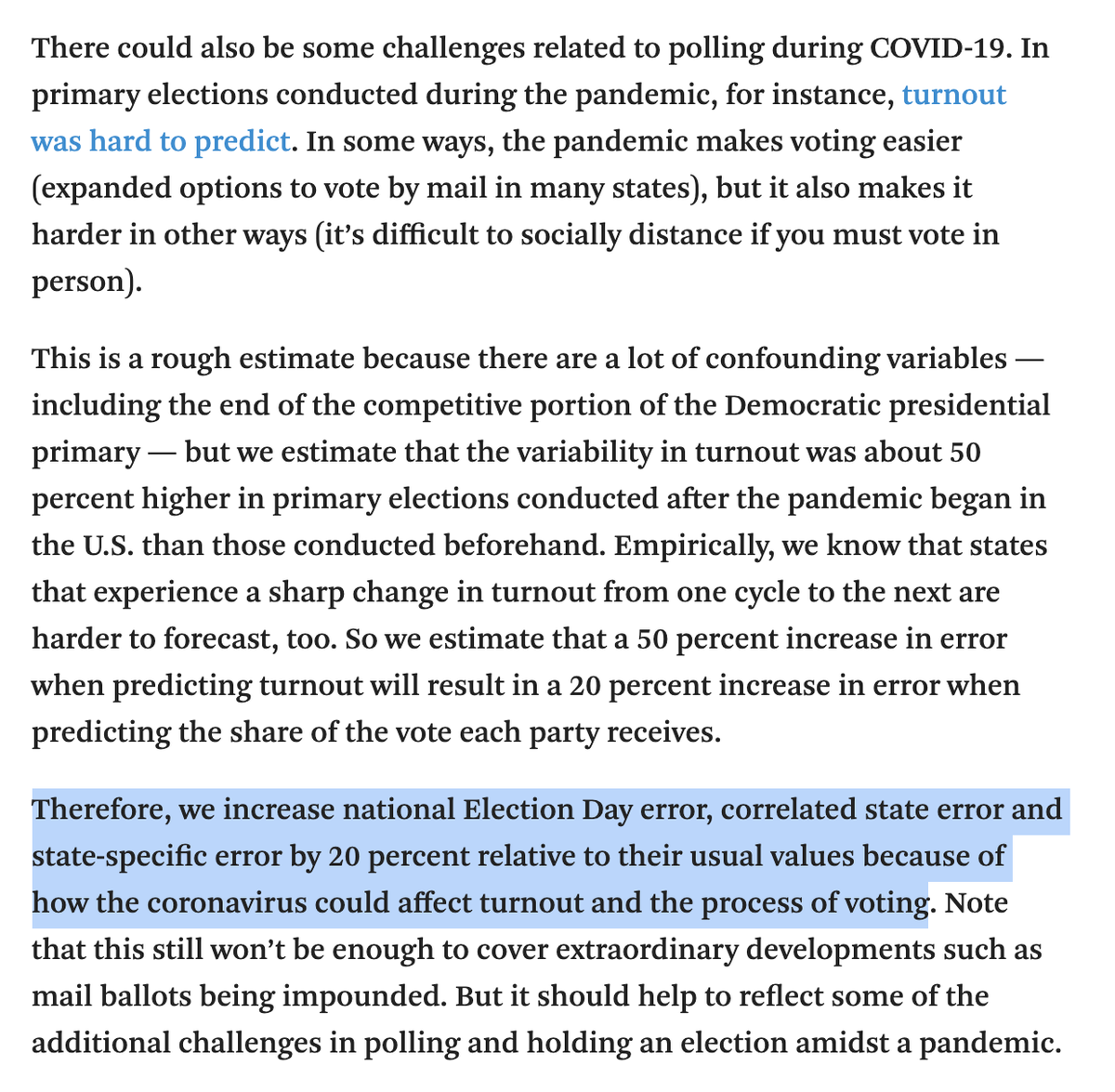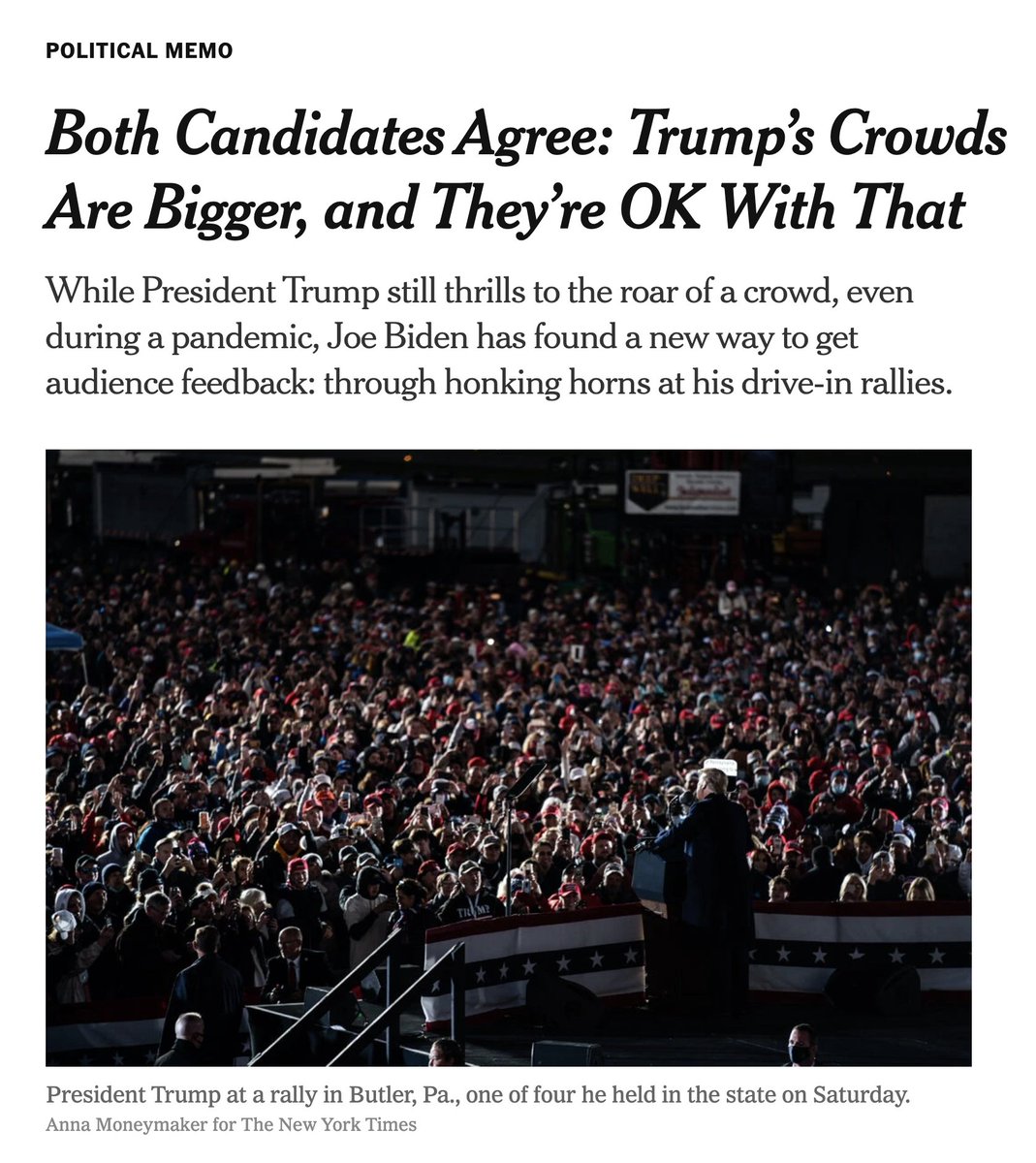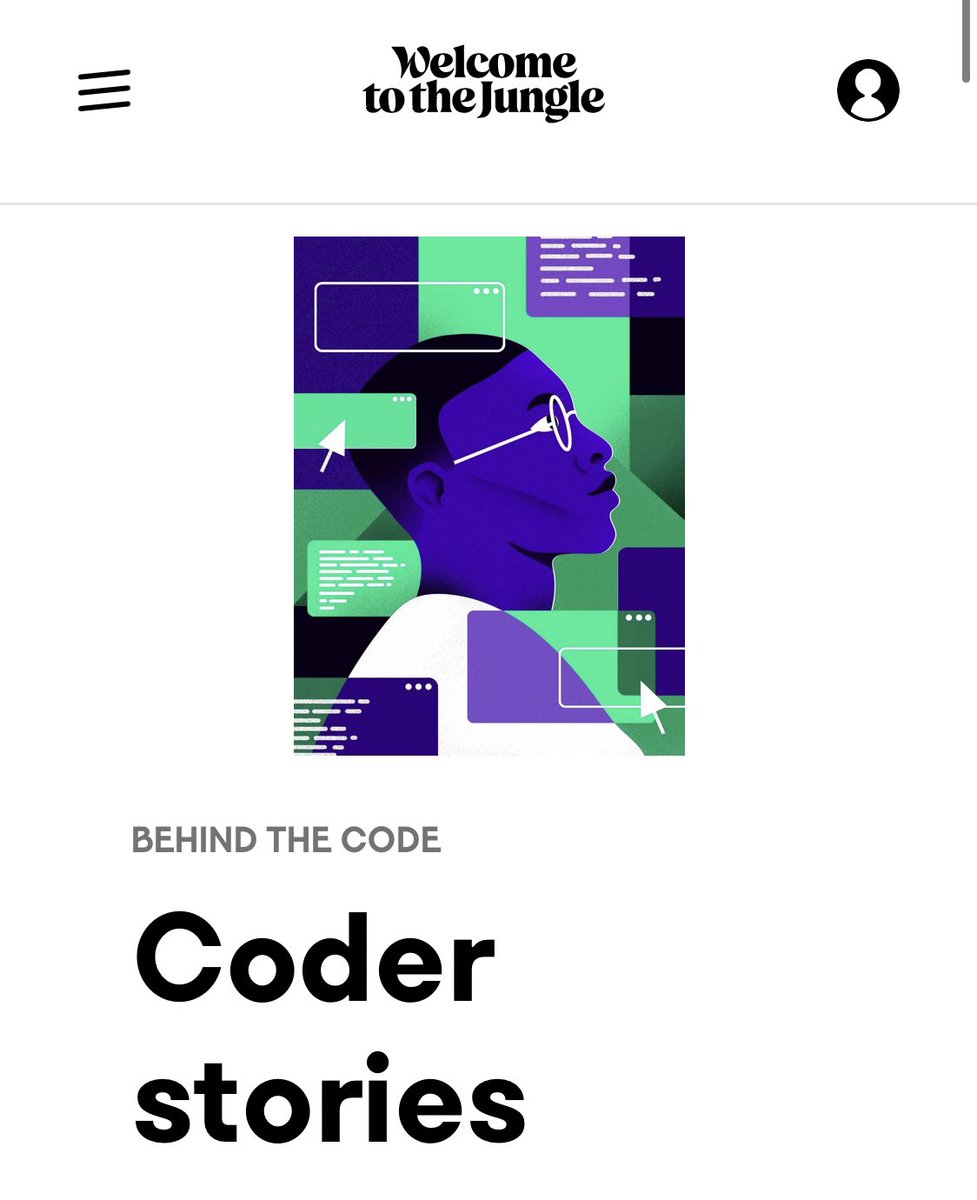
Lockdown = Dem votes down?
If Ds are less likely to vote in-person this year than Rs due to COVID, and only (say) 80% of those would have voted in-person actually end up voting by mail, that could mean a big partisan swing to Republicans.
This *may* be what 538 is missing. 🧵
If Ds are less likely to vote in-person this year than Rs due to COVID, and only (say) 80% of those would have voted in-person actually end up voting by mail, that could mean a big partisan swing to Republicans.
This *may* be what 538 is missing. 🧵
Put another way: whenever you convert from one channel to another, like going from in-person to mail, you will lose some fraction of people.
If a much larger share of Ds are doing that conversion this year than Rs, they lose more votes. That could be the big unmodeled factor.
If a much larger share of Ds are doing that conversion this year than Rs, they lose more votes. That could be the big unmodeled factor.
I looked at how 538 modeled COVID's impact on turnout. It appears they model COVID’s impact solely as higher uncertainty. But not as a partisan factor that favors Rs who will vote in-person more than Ds because they are less concerned about COVID.
fivethirtyeight.com/features/how-f…
fivethirtyeight.com/features/how-f…

In-person attendance at rallies seems to support this hypothesis. Both Biden and Trump agree that Trump rallies are much more heavily attended than Biden rallies. So, COVID may be a large partisan factor on in-person turnout. archive.is/ep1vI 

COVID may have a partisan impact on ground game too.
"Part of the problem, according to...a dozen Democratic elected officials and operatives, is the Biden campaign‘s decision to discourage field staff from knocking on doors during the pandemic" politico.com/news/2020/10/2…
"Part of the problem, according to...a dozen Democratic elected officials and operatives, is the Biden campaign‘s decision to discourage field staff from knocking on doors during the pandemic" politico.com/news/2020/10/2…
Note that this is different from @mendelsohn’s model of mail-in ballots on vote totals, though you should look at that too if you're interested in this topic.
https://twitter.com/balajis/status/1300806853459206146
PS: I am expressly not taking any position on the US election. But I am interested in the gap between 538 and prediction markets, and the partisan impact of COVID on in-person turnout *may* be the factor that current models aren’t taking into account. Only a hypothesis, though.
Btw, studies seem to differ on whether mail-in voting boosts turnout or not. Interestingly, those who are *assigned* to vote by mail seem to have less turnout in one study, which is kind of like the COVID effect. cambridge.org/core/journals/…
pnas.org/content/117/25…

pnas.org/content/117/25…


• • •
Missing some Tweet in this thread? You can try to
force a refresh






